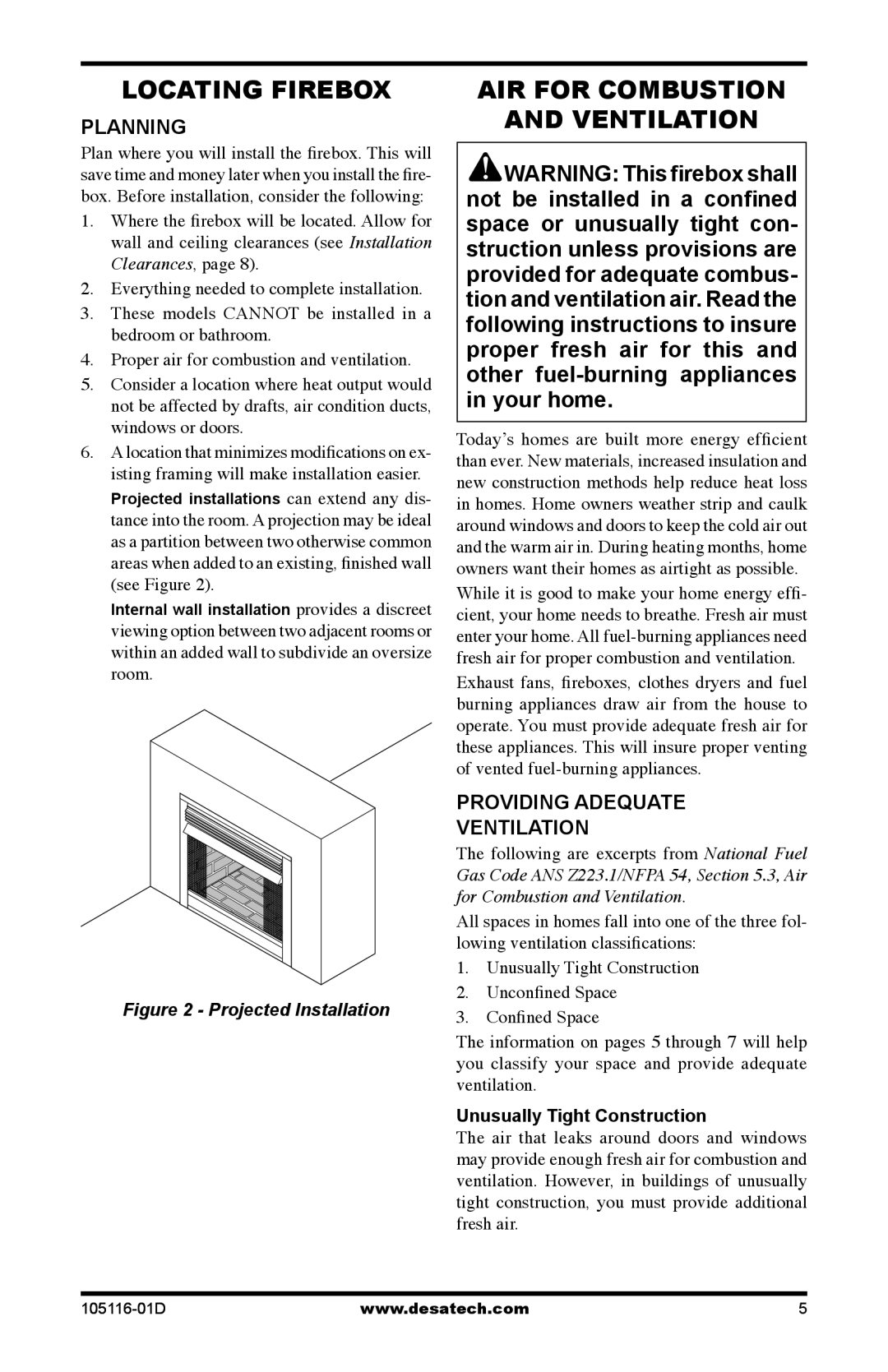
Locating Firebox
Planning
Plan where you will install the firebox. This will save time and money later when you install the fire- box. Before installation, consider the following:
1.Where the firebox will be located. Allow for wall and ceiling clearances (see Installation Clearances, page 8).
2.Everything needed to complete installation.
3.These models CANNOT be installed in a bedroom or bathroom.
4.Proper air for combustion and ventilation.
5.Consider a location where heat output would not be affected by drafts, air condition ducts, windows or doors.
6.A location that minimizes modifications on ex- isting framing will make installation easier.
Projected installations can extend any dis- tance into the room. A projection may be ideal as a partition between two otherwise common areas when added to an existing, finished wall (see Figure 2).
Internal wall installation provides a discreet viewing option between two adjacent rooms or within an added wall to subdivide an oversize room.
Figure 2 - Projected Installation
Air for combustion
and Ventilation
![]() WARNING: This firebox shall not be installed in a confined space or unusually tight con- struction unless provisions are provided for adequate combus- tion and ventilation air. Read the following instructions to insure proper fresh air for this and other
WARNING: This firebox shall not be installed in a confined space or unusually tight con- struction unless provisions are provided for adequate combus- tion and ventilation air. Read the following instructions to insure proper fresh air for this and other
Today’s homes are built more energy efficient than ever. New materials, increased insulation and new construction methods help reduce heat loss in homes. Home owners weather strip and caulk around windows and doors to keep the cold air out and the warm air in. During heating months, home owners want their homes as airtight as possible. While it is good to make your home energy effi- cient, your home needs to breathe. Fresh air must enter your home. All
Exhaust fans, fireboxes, clothes dryers and fuel burning appliances draw air from the house to operate. You must provide adequate fresh air for these appliances. This will insure proper venting of vented
PROVIDING ADEQUATE
VENTILATION
The following are excerpts from National Fuel Gas Code ANS Z223.1/NFPA 54, Section 5.3, Air for Combustion and Ventilation.
All spaces in homes fall into one of the three fol- lowing ventilation classifications:
1.Unusually Tight Construction
2.Unconfined Space
3.Confined Space
The information on pages 5 through 7 will help you classify your space and provide adequate ventilation.
Unusually Tight Construction
The air that leaks around doors and windows may provide enough fresh air for combustion and ventilation. However, in buildings of unusually tight construction, you must provide additional fresh air.
